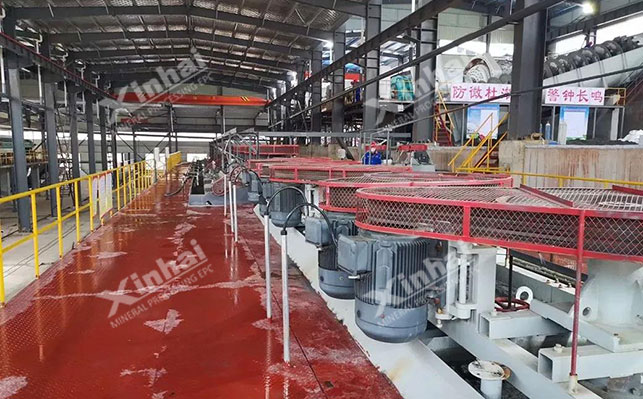In the world of mining, extracting valuable minerals from ore requires sophisticated techniques that optimize efficiency and yield. The flotation process is one such crucial method widely used in the mining industry to separate valuable minerals from gangue minerals based on their hydrophobicity. This process has revolutionized the extraction of valuable minerals and has become an integral part of modern mining operations. In this article, we will delve into the intricacies of the flotation process, exploring its principles, applications, and the key role it plays in mineral processing.

The flotation process is a selective separation technique used to separate valuable minerals from gangue (unwanted) minerals in ore. It relies on the differences in the surface properties of minerals to achieve separation. The process involves adding specific chemicals, known as flotation reagents, to the ore slurry to modify the surface properties of the minerals. The ore is then agitated to create bubbles, and the valuable minerals attach to these bubbles, forming a froth on the surface. The froth, containing the valuable minerals, is then collected while the gangue minerals sink to the bottom.
The flotation process is based on several fundamental principles:
a. Hydrophobicity: Certain minerals have a natural affinity for air and water-repellent characteristics, making them hydrophobic. When air bubbles are introduced into the ore slurry, hydrophobic minerals attach to these bubbles, while hydrophilic (water-loving) minerals do not.
b. Attachment to Air Bubbles: The hydrophobic minerals, due to their affinity for air, attach to the rising air bubbles, creating a froth at the liquid-air interface.
c. Froth Stability: The stability of the froth is crucial for successful flotation. The froth must be able to carry the attached valuable minerals to the surface for collection without breaking down.
Flotation relies on the use of various chemicals known as flotation reagents to modify the surface properties of minerals. These reagents can be categorized into collectors, frothers, modifiers, and depressants:
a. Collectors: Collectors enhance the hydrophobicity of valuable minerals, promoting their attachment to air bubbles. Common collectors include xanthates, dithiophosphates, and mercaptans.
b. Frothers: Frothers create a stable froth and help to carry the attached minerals to the surface. Examples of frothers include pine oil and methyl isobutyl carbinol (MIBC).
c. Modifiers: Modifiers adjust the pH and other chemical conditions of the slurry to optimize flotation. Common modifiers include lime, sulfuric acid, and caustic soda.
d. Depressants: Depressants decrease the hydrophobicity of certain minerals, preventing them from attaching to air bubbles. These reagents are essential for selective separation in complex ore bodies.
The flotation process typically involves several steps:
a. Grinding: The ore is first crushed and ground into fine particles to increase the surface area for effective flotation.
b. Conditioning: The ground ore is mixed with water and flotation reagents in a conditioning tank to prepare the slurry for flotation.
c. Flotation: The conditioned slurry is then introduced into flotation cells, where air is bubbled through the mixture. The hydrophobic minerals attach to the rising air bubbles to form the froth.
d. Froth Collection: The froth, containing the valuable minerals, is skimmed off the top of the flotation cell and collected for further processing.
e. Tailings Disposal: The gangue minerals, which do not attach to the air bubbles, sink to the bottom of the flotation cell and are discharged as tailings.
The flotation process finds application in various mining operations, especially for the extraction of valuable minerals such as copper, lead, zinc, nickel, gold, and silver. It is particularly effective in treating complex ores with multiple minerals, where selective separation is essential for economic processing.
While flotation is a widely used technique, it is not without challenges. Some common issues include:
a. Selective Separation: Achieving selective separation of complex ore bodies with multiple valuable minerals can be challenging and requires advanced flotation strategies.
b. Particle Size: The particle size distribution of the ore can significantly affect flotation efficiency and recovery.
c. Water Management: Flotation operations consume a large amount of water, requiring efficient water management strategies to minimize environmental impact.
In recent years, advancements in flotation technology, such as the development of more effective reagents, automated control systems, and computational modeling, have improved the efficiency and sustainability of the flotation process.
The flotation process in mining is a powerful and versatile tool used to separate valuable minerals from gangue minerals in ore. By harnessing the principles of hydrophobicity and selective attachment, the flotation process has revolutionized the extraction of valuable minerals and has become an indispensable part of modern mining operations. As technology continues to advance, further innovations in flotation technology are expected, further optimizing the efficiency and environmental sustainability of mineral processing in the mining industry.